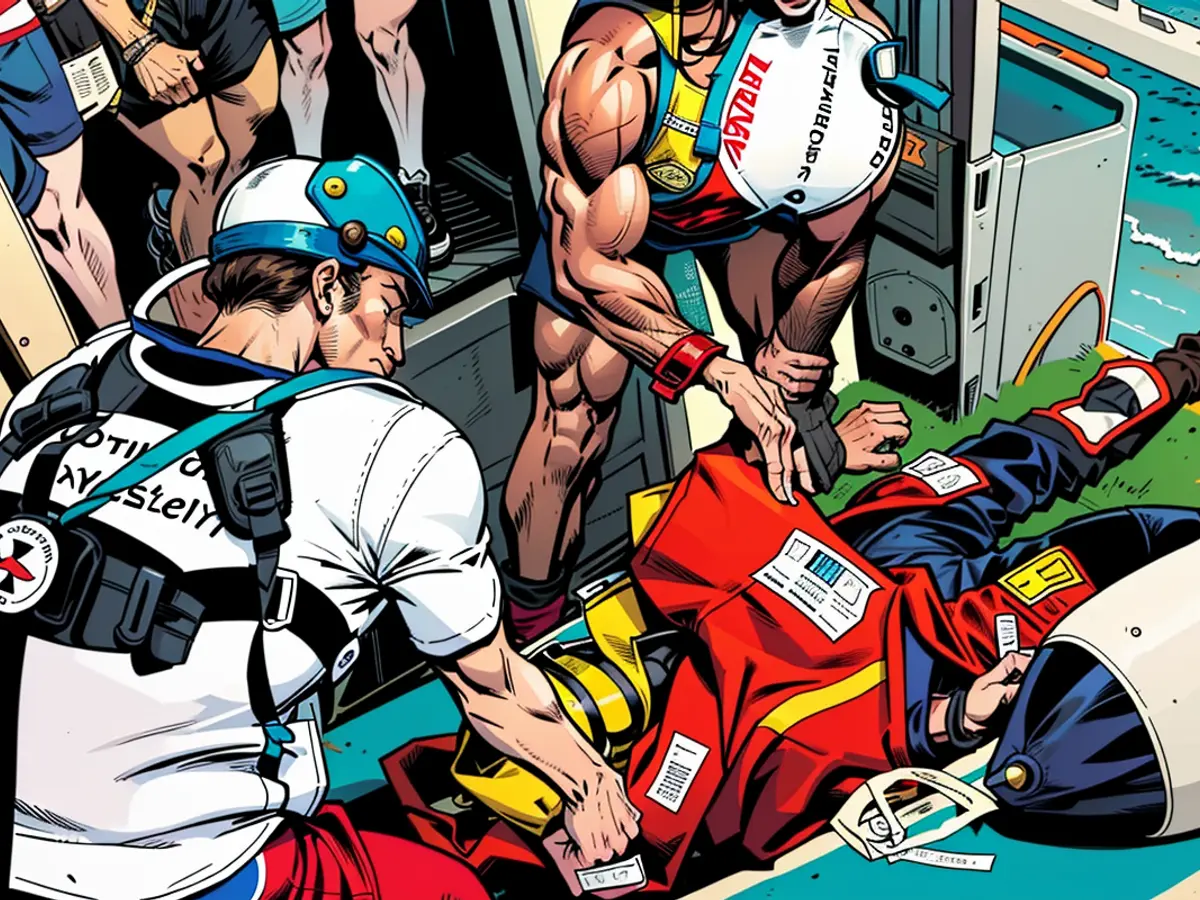accidents at sea - Thousands of people at the Day of Lifeguards
With a search-and-rescue vessel at sea and even taking part in a rescue: Numerous visitors and guests have informed themselves about the lifesavers and gained an insight into their work. According to a spokeswoman for the German Society for Sea Rescue (DGzRS) based in Bremen, "definitely as many as last year." In the course of the day, she counted on the various stations of the lifesavers a total of up to 40,000 people.
From Borkum to Ueckermünde - the lifesavers operate 55 stations at the North and Baltic Seas. At the Day of the Lifesavers, donations were collected at many stations, the crews presented their rescue technology, and they showed how they rescue people in distress at sea.
In Grömitz at the Lübeck Bay, interested parties could visit a search-and-rescue vessel, a search-and-rescue boat, and a training boat. Planned were also abseiling from a helicopter and rescue exercises in the harbor with the fire department. New sponsors and supporters could go to sea with the crew. The spokeswoman said that many people were attracted to seeing the search-and-rescue vessels from the inside and speaking with the crew.
Since its founding in 1865, the DGzRS has reportedly rescued or freed over 86,900 people - voluntarily, independently, and financed by donations.
- The lifesavers in Mecklenburg-Vorpommern also participate in sea rescues, contributing to the nationwide efforts by the German Society for Sea Rescue (DGzRS).
- Apart from Bremen, the DGzRS has branches in Hamburg, Lower Saxony, Schleswig-Holstein, and Bremen, all working diligently to ensure safety on the North and Baltic Seas.
- During the Day of the Lifesavers, visitors in Hamburg had the opportunity to witness demonstrations of rescue techniques and even embark on a trip aboard a seaot, gaining a firsthand experience of shipping emergency procedures.
- In contrast to Groöttingen, where the focus was primarily on land-based rescue exercises, the event in Seaot showcased various aspects of maritime rescue operations, attracting a significant number of curious spectators.
- Despite the presence of seaot stations in places such as Ueckermünde in the eastern Baltic Sea, many individuals expressed interest in learning about the DGzRS's lifesaving efforts, even traveling to cities like Bremen and Hamburg to gain this knowledge.
- The lifesavers in Bremen are not the only ones contributing to the rich cultural landscape of Germany; the Day of the Lifesavers also serves as a unique Festival (culture), showcasing the importance of collaboration between arts and emergency services.








